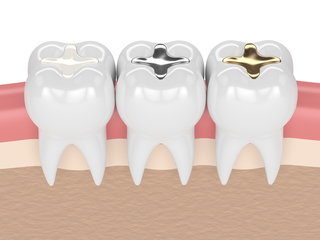
Understanding Tooth Fillings : Your Shield Against Cavities
The gradual erosion of tooth enamel by the acids produced by bacteria in plaque can lead to the formation of a cavity in the tooth surface. If not addressed timely, this can escalate, affecting the tooth’s interior and potentially necessitating a crown, a root canal, or even extraction. Fortunately, early intervention through dental filling can restore both the function and aesthetics of your tooth, averting further complications.
Determining the kind of tooth filling you require hinges on the cavity’s location and the extent to which the tooth structure is impacted. Let’s delve into the tooth filling options available to you:
Direct and Indirect Fillings: What Suits You Best?
Direct Filling
Suitable for small to moderate cavities, direct fillings are applied immediately post the removal of decay and the subsequent cleaning and shaping of the tooth. Composite resin filling, known for its single-visit restoration capability, is the go-to choice for this kind of filling.
Indirect Filling
When dealing with larger areas of decay or damage, especially in molars and premolars, indirect fillings come into play. These fillings, which can be crafted from composite resin, gold, or porcelain, offer a secure fit, enhanced durability, and the added benefit of strengthening the remaining tooth structure. The process involves two visits, with the final filling being bonded to the tooth during the second visit.
Exploring Tooth Filling Options
Understanding the type of filling you need sets the stage for choosing the best material based on various factors including durability, aesthetics, and cost. Here we explore the popular options:
Composite Resin Filling
Comprising acrylic resin mixed with elements like powdered quartz or glass, composite resin fillings are versatile, catering to both direct and indirect fillings. Their ability to blend with the natural enamel makes them a popular choice, especially for front teeth fillings. While they hold a higher price tag compared to amalgams, their propensity for staining is a downside.
Gold Filling
Crafted from an alloy of gold, copper, and other metals, gold fillings are predominantly used in indirect fillings, promising longevity that spans over 20 years. Despite being a pricier option, their visibility remains a drawback.
Porcelain Filling
Porcelain fillings, utilized in indirect fillings, stand out for their natural appearance, offering a color match that blends seamlessly with your tooth. Their resistance to staining and cracking adds to their durability, positioning them as a viable yet expensive alternative to composite resin fillings.
Temporary Tooth Filling: A Short-Term Solution
In some cases, a temporary tooth filling might be recommended as a short-term solution before a more permanent restoration can be done. It is essential to discuss this option with your dentist to understand when it might be appropriate.
In the face of small to moderate cavities, you have a plethora of filling choices at your disposal, each addressing different functional, aesthetic, and financial considerations. Engage in a detailed discussion with your dentist to pinpoint the filling that aligns with your needs, steering you towards a healthy and radiant smile.
